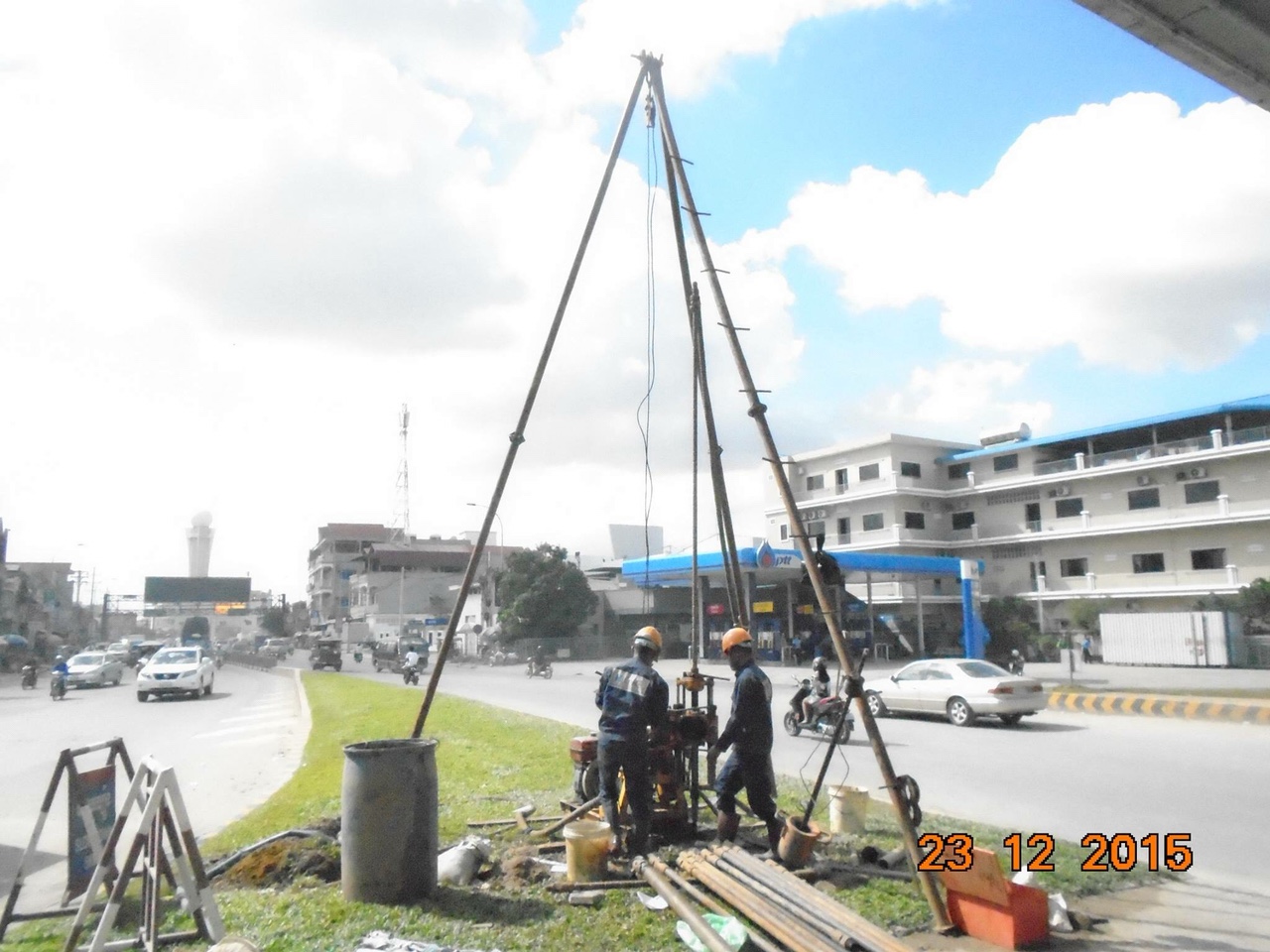Triaxial test (UU, CU, CD)

CONCEPT
Conventional triaxial test involves subjecting a cylindrical soil sample to radial stresses (confining pressure) and controlled increases in axial stresses or axial displacements. The cylindrical soil specimen is usually of the dimension of 100 mm diameter and 200 mm height. The specimen in vertically enclosed in a thin rubber membrane. The specimen preparation depends on the type of the soil. Samples of cohesive soils are often prepared directly from saturated compacted samples, either undisturbed or remolded. For cohesion-less soils, however, the specimen is prepared with the help of a mold that maintains the required shape of the specimen.
The specimen is vertically enclosed with a thin rubber membrane and placed between two rigid ends inside a pressure chamber. The upper plate can move vertically and apply vertical stresses to the specimen. The axial strain/stress of the sample is controlled through the movement of this vertical axis. Also, the confining pressure is controlled by the water pressure surrounding the sample in the pressure chamber. The volume change of the sample is also controlled by measuring the exact volume of moving water.
Depending on the combination of loading and drainage condition, three main types of triaxial tests can be carried out:
- Consolidated – Drained (CD)
- Consolidated – Undrained (CU)
- Unconsolidated - Undrained (UU)
Triaxial test data, in general, include evolution of axial and volumetric strain, deviatoric and isotropic stress, and pore pressure evolution. From the triaxial test results, it is possible to deduce the shear strength parameters, namely friction angle, cohesion, dilatancy angle and the other dependent parameters.





















